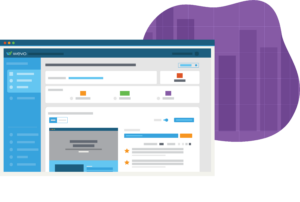Contents
- 1 It de-risks investments in resource allotment and business decision-making.
- 2 It ensures the right features and experiences are being designed and developed in the best way.
- 3 You can pivot early to avoid rework.
- 4 You cultivate an iterative approach to product design.
- 5 It helps program teams take more ownership of their product experience.
- 6 It directly ties the effectiveness of the end customer experience to business results.
- 7 Ready to shift left to do right?
User experience (UX) research is a crucial part of product and experience development, revealing necessary insights that can help make or break an initiative’s future. Unfortunately, it’s too often saved for late in the process when the project is very far along. That means teams miss out on the chance to make adjustments early that could not only help optimize budgets and resources, but ensure projects are connecting with users and on track to meet business objectives.
We know: teams are strapped and being asked to do more than ever. Still, let us make the case for shifting UX research left. By incorporating UX research earlier in the development process, companies can reap a host of benefits. And it’s more reliable and less effort than you think.
Here are six ways early UX testing positively impacts business objectives.
It de-risks investments in resource allotment and business decision-making.
From ideation to protyping to production, the upfront investment in development both from a financial and time standpoint can be staggering. Early UX testing gives teams check-ins along the way instead of waiting for the big reveal to know if the gamble paid off. By understanding where the project is connecting with its intended users and where it is falling short, teams will have solid information that informs their decision-making every step of the way.
It ensures the right features and experiences are being designed and developed in the best way.
Development can be very open-ended, as the options for which features and options to build out are seemingly infinite. But what looks good on paper may not pan out in real life, and without user feedback you could end up with fancy tools that don’t deliver. Incorporating UX testing earlier helps avoid this outcome while streamlining the later stages of the development process.
You can pivot early to avoid rework.
The earlier bugs are identified, the less expensive they are to solve. What may start out as an easy fix often becomes a much larger task later in the process as systems and ideas become increasingly intertwined. Getting better intel on the front end can help you salvage the best ideas and prototypes early by redeveloping or re-iterating on them, or trash an idea before too much investment has been made and go in a new direction.
You cultivate an iterative approach to product design.
This allows teams to discover next steps throughout the process instead of being tied to one outcome from the beginning. Building and testing one phase before moving on to the next enables teams to deliver greater business valu,e while remaining adaptable to changes that arise from shifting business requirements or additional customer input.
It helps program teams take more ownership of their product experience.
Early UX research gives teams the tools they need to be more empowered throughout the process and create the best end result. And, the data gathered allows them to report back to the business with confidence so everyone can be on the same page every step of the way.
It directly ties the effectiveness of the end customer experience to business results.
UX research allows us to understand the experience we’re creating for the customer. Rather than hoping for results, teams can know that they’ve designed digital experiences in a way that makes it easy for users to complete the desired action. Common errors such as complexity or requiring too many actions can be weeded out early, reducing the chances that a user will bounce. Then, knowing that they’ve done their homework, teams can deliver on business-critical KPIs.
Ready to shift left to do right?
Incorporating UX testing earlier in the development process is a win-win, giving teams the insights they need to create impactful customer experiences that deliver results. WEVO can help you deliver more statistically significant results at 10x the scale – without adding additional pressure to your research team. Our UX research platform uncovers insights with significantly less effort than typical tools, delivering synthesized quantitative and qualitative insights, scores and benchmarks with less than 30 minutes of effort.



